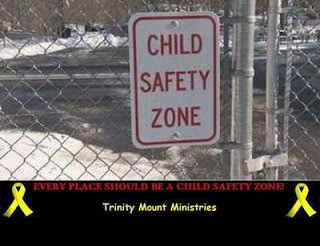MBF Child Safety Matters™, powered by Monique Burr Foundation for Children, Inc. (MBF), was recently shown to be an effective and quality program that empowers children with the knowledge and skills to recognize and respond to unsafe situations, according to an independent study conducted by Florida State University's (FSU) School of Teacher Education. The evaluation took place from January through July 2015 and was approved by the FSU Institutional Review Board.
Specific findings from the independent study of MBF Child Safety Matters™ include:
- 620 kindergarten through fifth grade students demonstrated 96 percent pre- to post-test gains on student assessments, which shows MBF Child Safety Matters™ is successfully educating participants with strategies to prevent all types of child abuse, bullying, cyberbullying and digital abuse.
- Procedural fidelity to the prescribed MBF Child Safety Matters™ curriculum exceeds 90 percent by its facilitators, typically school counselors. This includes adherence to lesson plans, general guidelines and program language.
- Children respond well to MBF Child Safety Matters™ and facilitators are enthusiastic about using the program.
- Facilitators believe MBF Child Safety Matters™ topics are explained appropriately in the scripts, lesson PowerPoints and other materials, rating average topic coverage and appropriateness at a 4.7 on a scale of 5.
"The program is successful in educating elementary students with strategies to prevent bullying, cyberbullying, digital abuse and all types of child abuse," concluded the researchers in the executive summary of the final report.
Offered at no cost to Florida's public schools, MBF Child Safety Matters™ is a program based on polyvictimization research and best practices, which states, "Implementing a single comprehensive program that teaches universal rules and strategies for preventing all types of victimization is more effective than implementing numerous single-topic programs." MBF Child Safety Matters™ is designed to address these issues in an age-appropriate manner and with easy and practical lessons and reinforcement materials.
Noted polyvictimization researcher, David Finkelhor, Ph.D., Director, Crimes Against Children Research Center, University of New Hampshire, recently praised the MBF Child Safety Matters™ program and said, "The program is impressive. The important information is well formulated and well presented, developmentally appropriate, and based on good understanding of literature."
The curriculum is designed for students in kindergarten through sixth grades, and will soon expand to include the seventh and eighth grades. MBF Child Safety Matters™ is supported by state and national experts, leaders and agencies in the education and prevention fields, in addition to aligning with numerous Florida Education Standards, the Jeffrey Johnston Stand Up for All Students Anti-Bullying Act, and Florida Statute 39.
MBF Child Safety Matters™ is currently approved in 56 of 67 counties in Florida and has trained more than 1,300 school facilitators, reaching more than 1 million students since its inception, however we need to reach more. According to the National Child Traumatic Stress Network, one in four children attending school has been, or will be, exposed to a traumatic event that can affect learning or school behavior. Childhood trauma is associated with lower grade point averages, higher school absence rates, increased drop-out rates, suspensions and expulsions, as well as reading difficulties.
"The Monique Burr Foundation for Children believes that all children have the right to be safe," said Lynn Layton, executive director of the Monique Burr Foundation for Children. "The validation that MBF Child Safety Matters™ has received from the Florida State University evaluation, in addition to other credible professional sources, is very exciting and is an affirmation that our program is positively impacting youth. This program should be in every school, because every child deserves to be safe!"
For more information about this critical safety program focusing on bullying and child abuse prevention, visitwww.mbfchildsafetymatters.org.
About the MBF Child Safety Matters™ program, powered by the Monique Burr Foundation for Children, Inc. (MBF)
The MBF Child Safety Matters™ program, powered by the Monique Burr Foundation for Children, Inc., is a research-based, primary prevention education program, designed to educate and empower elementary and middle school students and all relevant adults with information and strategies to prevent bullying, cyberbullying, digital abuse and all types of child abuse and exploitation. In 2015,Florida State University's School of Teacher Education conducted an independent study of the MBF Child Safety Matters™ program. The study validated that the program's prevention curriculum is effective with 96 percent of students showing a gain in knowledge from the pre- to post-test. The MBF Child Safety Matters™ program is approved for use in 56 out of 67 Florida counties, is provided at no cost to the Florida public schools and is aligned with Florida Education Standards, meets the qualifications of the Jeffrey Johnston Stand Up for All Students Anti-Bullying Act and Florida Statute 39.
Monique Burr Foundation for Children, Inc., has trained more than 1,300 facilitators to implement the program, and its safety lessons have reached more than 1 million children. Every child deserves to be safe.
For more information about the MBF Child Safety Matters™ program, powered by the Monique Burr Foundation for Children, Inc., call (904) 642-0210 or visit www.mbfchildsafetymatters.org.
Source: MBF Child Safety Matters














